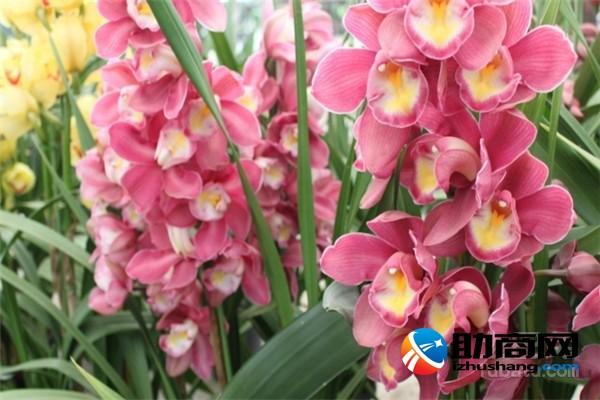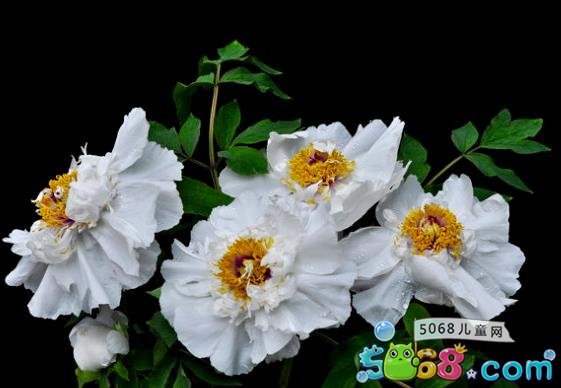How to cultivate Cymbidium
How to raise orchids? Key points of maintaining the management of Cymbidium

How to raise orchids?
(1) the selection of culture medium. When cultivating Cymbidium, some medium with larger particles should be selected; usually, vermiculite, coconut shavings, broken bricks, clay and peat moss can be used for cultivation.
(2) Lighting control. Compared with the traditional good orchids, Cymbidium has higher requirements for light. Insufficient light will lead to slender plants and weak disease resistance, and it also has a significant effect on the reproductive growth of Cymbidium; 20%-30% shade in spring, 40%-50% in summer, and light can begin to increase during the bud growth period from late September to December. 50% shading in summer and 60% sunshine in autumn, which is conducive to the formation and differentiation of flower buds. Winter rain and snow, such as adding auxiliary light, are very beneficial to flowering.
(3) fertilizer management. At present, as a non-soil substrate, the fertilizer efficiency of Cymbidium is not enough, so fertilization is very important in the cultivation of Cymbidium. Usually, fertilizers with high nitrogen content, such as urea, should be used from March to September. In October, more types of phosphorus and potassium, such as potassium dihydrogen phosphate, should be used. Orchid fertilizer can also be used. The concentration is usually 0.1% to 0.3%. At the same time, from April to May after flowering and from September to October in autumn, topdressing should be applied 1-2 times a month. The type of topdressing is mainly made of freshly cooked cake fertilizer, which can choose bone meal, fish meal, grass and water.
(4) Water management. After watering for 3-5 days in winter, the basin soil is better dry; because the temperature is lower, the water content of plant cells is lower, which is more conducive to the overwintering of Cymbidium. The amount of water should increase gradually from the beginning of spring; it should be watered once a day in early summer until autumn, and then gradually decrease.
(5) temperature. Cymbidium should be moved into the greenhouse in winter, and the temperature should be kept above 5-8 °C. The main reason is that the flower bud differentiation must go through a lower temperature stage of 6-10 °C, and flower buds and buds are most suitable for growth at 10-20 °C. however, at this stage, the temperature difference between day and night should be kept large, because the temperature difference between day and night is so small that it is likely to cause buds to turn yellow. Each plant can grow several buds; therefore, starting in November, each bud should be spanned so that each pedicel is as uniform as possible, thus increasing the ornamental value of the entire flowerpot.
Propagation methods of Cymbidium:
In general, the propagation of Cymbidium is usually carried out through ramets, which is very simple and has a high success rate. In the stem of Cymbidium, it is better to choose the dormancy period after anthesis. This is the best time for ramets. In the case of ramets, do the following: first, dry the Cymbidium for a period of time until its roots become white and soft. Then cut it into ramets and apply toner to the wound after cutting to prevent infection. After ramet, it should be dried for a period of time, and then potted. Healthy plants usually have ramets for 2 to 3 years, otherwise they will adversely affect their growth.
Key points of Protection and Management of Cymbidium
1. Watering: most Cymbidium hybrids require higher humidity, so it is necessary to provide enough water for plants throughout the year (seedlings should be watered less appropriately). Generally speaking, water should be watered once a day in winter and early spring, at 8 o'clock in the morning and 5 o'clock in early summer, and foliar spray (fog) watering should be carried out daily from early summer to late autumn.
two。 Fertilization: use decomposed cake fertilizer during the growing season, diluted to 0.02% concentration of liquid fertilizer 1-2 times; usually use fermented oily organic fertilizer mixed with bone meal or calcium superphosphate to prepare particles about 2 cm in diameter. On the surface of the basin (fertility can be released slowly through the infiltration of water), and a compound fertilizer solution with a concentration of 0.1% Mel 0.2% is applied once a week and applied together with watering.
3. Lighting: the growth of Cymbidium needs enough scattered light. In summer and autumn, sunshade nets are used for about 50% of the sunshade. When the sun is soft in cloudy days or in winter and spring, open the sunshade net to receive direct light. However, during flowering, orchids should be placed in weak light to make them bloom brightly.
4. Temperature: most varieties of Cymbidium have a cool climate. Usually, it is very strong when growing at 15-25 ℃. The higher temperature in summer is 35 °C. When the autumn temperature is higher than 25 °C, the buds will stop growing, turn yellow and wither. Seedlings should spend the winter at temperatures above 5 °C each year.
5. Pest control: 1 chalk disease is easy to occur in the case of poor ventilation. It can be sprayed and rooting 600-800 times with 12% Rosote copper emulsifiable concentrate. Spray again after 7-10 days. Sometimes there may be black spot and black blue head. You can spray 1000 times of thiophanate methyl or 1000 times of carbendazim every half a month to prevent it from happening. (3) scale worm, which can be diluted with 600-800 times solution. 4 red spiders can be sprayed with neutral washing powder 150 times; 5 aphids can be boiled with 500 grams of pulsatilla root for 500 hours, filtered and sprayed.
How to raise orchids?
Another name of the cypress is Hutoulan, which has different names in different ways. In Japan, it is called "East Asian Orchid" and in Europe and the United States it is called "New Meiniang Orchid". Rich and peaceful, noble and elegant is the flower language of Cymbidium. In a sense, it is not a species of natural products, but produced by artificial hybridization. At present, the better orchid is cypress, so today the editor will introduce you some knowledge of Cymbidium.
First of all, how to raise orchids?
The cultivation period of Cymbidium is longer, about 3 years, when divided into buds, it means that it can grow normally. In the growth stage, the lateral buds of Cymbidium gradually developed into flower buds. Flower buds are usually formed on pseudobulbs formed by new buds. Usually, each pseudobulb can form one or two buds. . After the flower bud is formed, the temperature around it needs to be controlled. If the ambient temperature is not within the range of its normal growth temperature, it cannot blossom normally. Under normal conditions, the temperature of 10 to 25 ℃ is the most suitable for the growth of Cymbidium. During flowering, the temperature should be strictly controlled.
A good species is the breeding method of Cymbidium:
In general, the propagation of Cymbidium is usually carried out through ramets, which is very simple and has a high success rate. In the stem of Cymbidium, it is better to choose the dormancy period after anthesis. This is the best time for ramets. In the case of ramets, do the following: first, dry the Cymbidium for a period of time until its roots become white and soft. Then cut it into ramets and apply toner to the wound after cutting to prevent infection. After ramet, it should be dried for a period of time, and then potted. Healthy plants usually have ramets for 2 to 3 years, otherwise they will adversely affect their growth.
The third is some points for attention on the cultivation of Cymbidium:
The compositions of fertilizers and catalysts used during the growing season are different. In the growing season, fertilizer is mainly composed of nitrogen, phosphorus and potassium, but in the case of catalyst, it is necessary to add appropriate amount of potassium and phosphorus, the ratio is generally 1: 2: 2. The quality of fertilizers is also strictly controlled. Between 5.8 and 6.2 is the most appropriate. If beyond this range, Cymbidium can not grow normally. In summer, it is usually necessary to maintain fertilizer once or twice a month, while in other seasons, Cymbidium is used every three days. And watering. It is usually watered once a day in May and September, and twice a day in July and August.
The above is some knowledge of Dahua Magnolia introduced to you by the editor. Now, the price of Cymbidium is determined according to the market situation every year. In addition, it is divided according to its quality. The better flower price of Cymbidium is generally between 150 yuan and 200 yuan per pot, while the bad one is less than 100 yuan. The editor's introduction is here today.
Time: 2019-05-15 Click:
- Prev

How to raise peonies in the four seasons
Four Seasons Peony is a kind of peony, peony is very beautiful, known as a good flower. Today, the editor will share with you the farming methods of the four seasons of peony. Let's see. Four seasons peony growth habits four seasons peony enjoy warm, cool, dry, sunny environment, like the sun, but also can resist semi-overcast, cold, drought
- Next

Propagation methods and matters needing attention of green flowers and cockroaches
The beautiful yellow leaves are beautiful, the leaves are purplish red all the year round, and they are excellent colored leaves; they are suitable for planting as landscape trees in the garden, and beautiful tree species are always very popular, so what is its breeding method? Breeding methods and preventive measures are all organized by everyone.
Related
- Fuxing push coffee new agricultural production and marketing class: lack of small-scale processing plants
- Jujube rice field leisure farm deep ploughing Yilan for five years to create a space for organic food and play
- Nongyu Farm-A trial of organic papaya for brave women with advanced technology
- Four points for attention in the prevention and control of diseases and insect pests of edible fungi
- How to add nutrient solution to Edible Fungi
- Is there any good way to control edible fungus mites?
- Open Inoculation Technology of Edible Fungi
- Is there any clever way to use fertilizer for edible fungus in winter?
- What agents are used to kill the pathogens of edible fungi in the mushroom shed?
- Rapid drying of Edible Fungi

